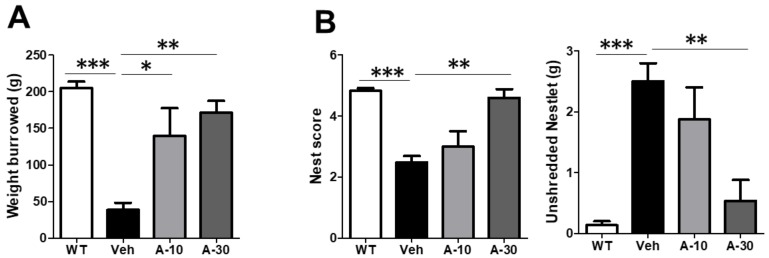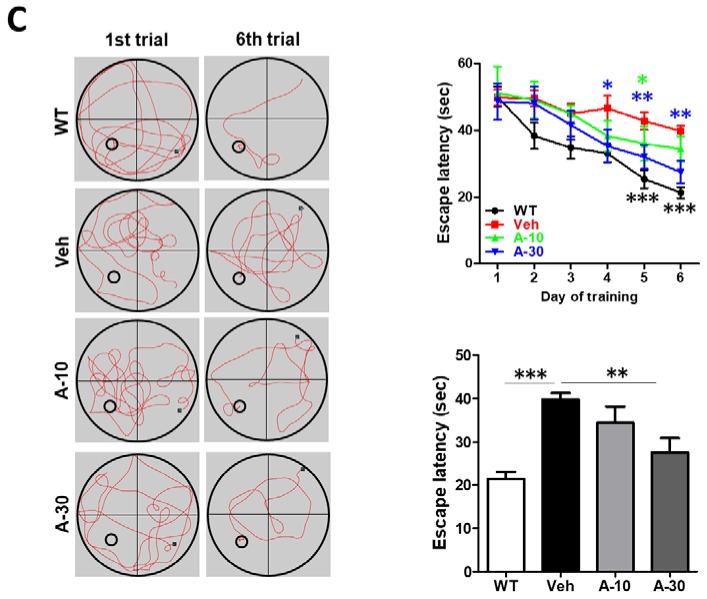Figure 6.
HE-A ameliorates behavior deficits in APP/PS1 mice. APP/PS1 transgenic mice were orally administered with vehicle (Veh) or HE-A at 10 µm (A-10) and 30 µm (A-30) (n = 8 each). The tasks of burrowing and nesting were performed at 70 and 80 days, respectively, post administration. Wild type mice treated with vehicle (WT) was used as non-transgenic control. APP/PS1 mice treated with vehicle (Veh) was used as non-medication control. Bar graphs show the results from burrowing task (A), and the nesting task’s nest score and unshredded Nestlet (B) from nesting task. MWM were performed. Wild type mice treated with vehicle (WT, n = 5) was used as non-transgenic control. (C) Morris water maze (MWM) was performed. The representative swim paths in the hidden platform tests at 1st and last trial (left panel). Escape latency during the training phase (up right panel) and at the 6th day of training (low right panel) was examined. The results are the mean ± S.E.M. Significant differences between Veh group and the other groups are indicated by *, p < 0.01; **, p < 0.01; ***, p < 0.001. Groups labeled with different letters in escape latency were significantly different from each other with two way ANOVA, p < 0.05.


